Fernando Moya Rueda
Multi-Channel Time-Series Person and Soft-Biometric Identification
Apr 04, 2023Abstract:Multi-channel time-series datasets are popular in the context of human activity recognition (HAR). On-body device (OBD) recordings of human movements are often preferred for HAR applications not only for their reliability but as an approach for identity protection, e.g., in industrial settings. Contradictory, the gait activity is a biometric, as the cyclic movement is distinctive and collectable. In addition, the gait cycle has proven to contain soft-biometric information of human groups, such as age and height. Though general human movements have not been considered a biometric, they might contain identity information. This work investigates person and soft-biometrics identification from OBD recordings of humans performing different activities using deep architectures. Furthermore, we propose the use of attribute representation for soft-biometric identification. We evaluate the method on four datasets of multi-channel time-series HAR, measuring the performance of a person and soft-biometrics identification and its relation concerning performed activities. We find that person identification is not limited to gait activity. The impact of activities on the identification performance was found to be training and dataset specific. Soft-biometric based attribute representation shows promising results and emphasis the necessity of larger datasets.
Dataset Bias in Human Activity Recognition
Jan 19, 2023



Abstract:When creating multi-channel time-series datasets for Human Activity Recognition (HAR), researchers are faced with the issue of subject selection criteria. It is unknown what physical characteristics and/or soft-biometrics, such as age, height, and weight, need to be taken into account to train a classifier to achieve robustness towards heterogeneous populations in the training and testing data. This contribution statistically curates the training data to assess to what degree the physical characteristics of humans influence HAR performance. We evaluate the performance of a state-of-the-art convolutional neural network on two HAR datasets that vary in the sensors, activities, and recording for time-series HAR. The training data is intentionally biased with respect to human characteristics to determine the features that impact motion behaviour. The evaluations brought forth the impact of the subjects' characteristics on HAR. Thus, providing insights regarding the robustness of the classifier with respect to heterogeneous populations. The study is a step forward in the direction of fair and trustworthy artificial intelligence by attempting to quantify representation bias in multi-channel time series HAR data.
Video-based Pose-Estimation Data as Source for Transfer Learning in Human Activity Recognition
Dec 02, 2022



Abstract:Human Activity Recognition (HAR) using on-body devices identifies specific human actions in unconstrained environments. HAR is challenging due to the inter and intra-variance of human movements; moreover, annotated datasets from on-body devices are scarce. This problem is mainly due to the difficulty of data creation, i.e., recording, expensive annotation, and lack of standard definitions of human activities. Previous works demonstrated that transfer learning is a good strategy for addressing scenarios with scarce data. However, the scarcity of annotated on-body device datasets remains. This paper proposes using datasets intended for human-pose estimation as a source for transfer learning; specifically, it deploys sequences of annotated pixel coordinates of human joints from video datasets for HAR and human pose estimation. We pre-train a deep architecture on four benchmark video-based source datasets. Finally, an evaluation is carried out on three on-body device datasets improving HAR performance.
Human Activity Recognition using Attribute-Based Neural Networks and Context Information
Oct 28, 2021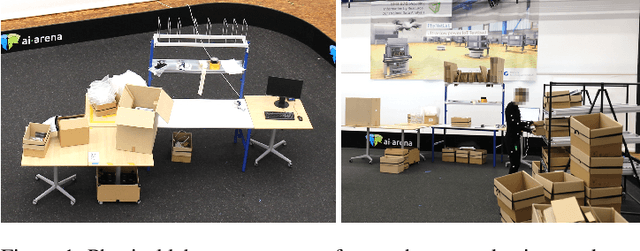
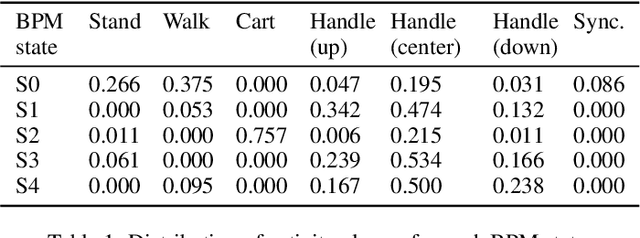
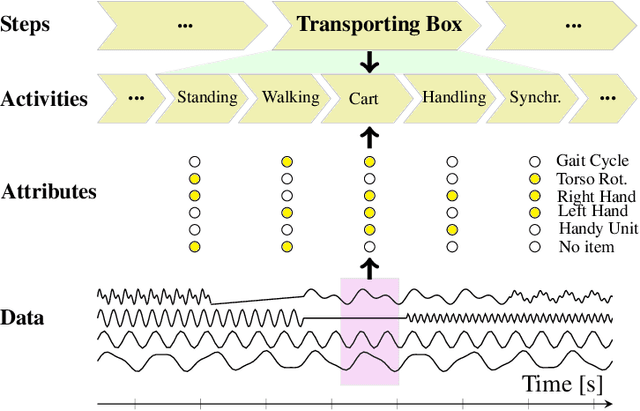
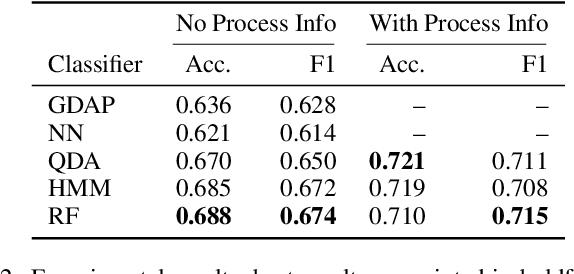
Abstract:We consider human activity recognition (HAR) from wearable sensor data in manual-work processes, like warehouse order-picking. Such structured domains can often be partitioned into distinct process steps, e.g., packaging or transporting. Each process step can have a different prior distribution over activity classes, e.g., standing or walking, and different system dynamics. Here, we show how such context information can be integrated systematically into a deep neural network-based HAR system. Specifically, we propose a hybrid architecture that combines a deep neural network-that estimates high-level movement descriptors, attributes, from the raw-sensor data-and a shallow classifier, which predicts activity classes from the estimated attributes and (optional) context information, like the currently executed process step. We empirically show that our proposed architecture increases HAR performance, compared to state-of-the-art methods. Additionally, we show that HAR performance can be further increased when information about process steps is incorporated, even when that information is only partially correct.
Learning Attribute Representation for Human Activity Recognition
Feb 02, 2018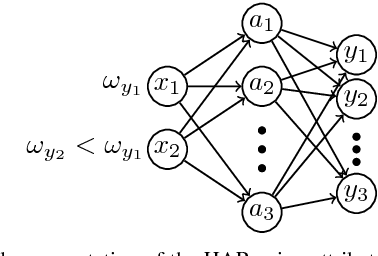



Abstract:Attribute representations became relevant in image recognition and word spotting, providing support under the presence of unbalance and disjoint datasets. However, for human activity recognition using sequential data from on-body sensors, human-labeled attributes are lacking. This paper introduces a search for attributes that represent favorably signal segments for recognizing human activities. It presents three deep architectures, including temporal-convolutions and an IMU centered design, for predicting attributes. An empiric evaluation of random and learned attribute representations, and as well as the networks is carried out on two datasets, outperforming the state-of-the art.
Neuron Pruning for Compressing Deep Networks using Maxout Architectures
Jul 21, 2017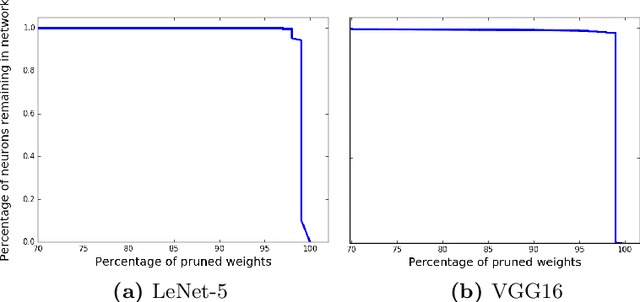



Abstract:This paper presents an efficient and robust approach for reducing the size of deep neural networks by pruning entire neurons. It exploits maxout units for combining neurons into more complex convex functions and it makes use of a local relevance measurement that ranks neurons according to their activation on the training set for pruning them. Additionally, a parameter reduction comparison between neuron and weight pruning is shown. It will be empirically shown that the proposed neuron pruning reduces the number of parameters dramatically. The evaluation is performed on two tasks, the MNIST handwritten digit recognition and the LFW face verification, using a LeNet-5 and a VGG16 network architecture. The network size is reduced by up to $74\%$ and $61\%$, respectively, without affecting the network's performance. The main advantage of neuron pruning is its direct influence on the size of the network architecture. Furthermore, it will be shown that neuron pruning can be combined with subsequent weight pruning, reducing the size of the LeNet-5 and VGG16 up to $92\%$ and $80\%$ respectively.
 Add to Chrome
Add to Chrome Add to Firefox
Add to Firefox Add to Edge
Add to Edge